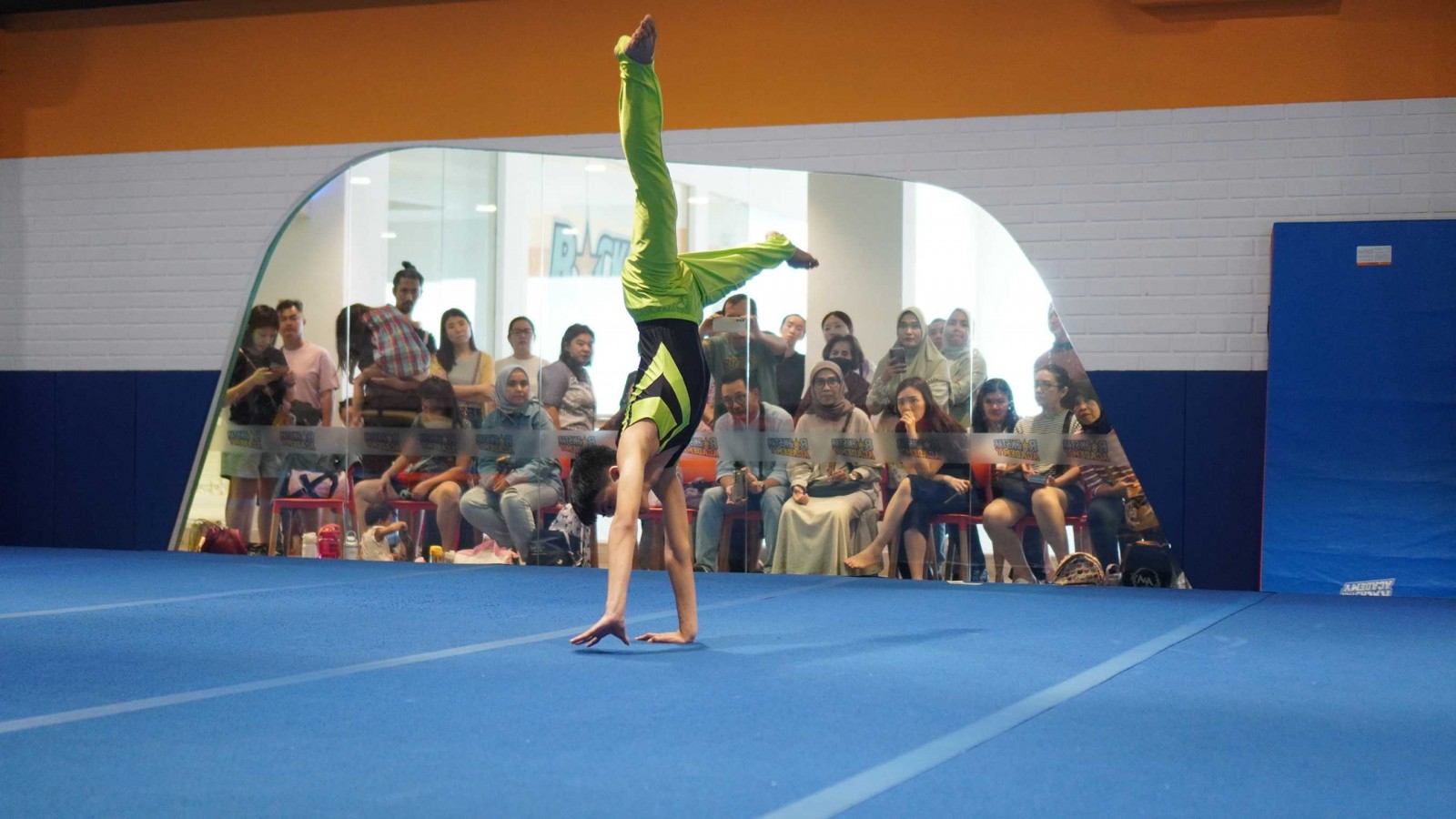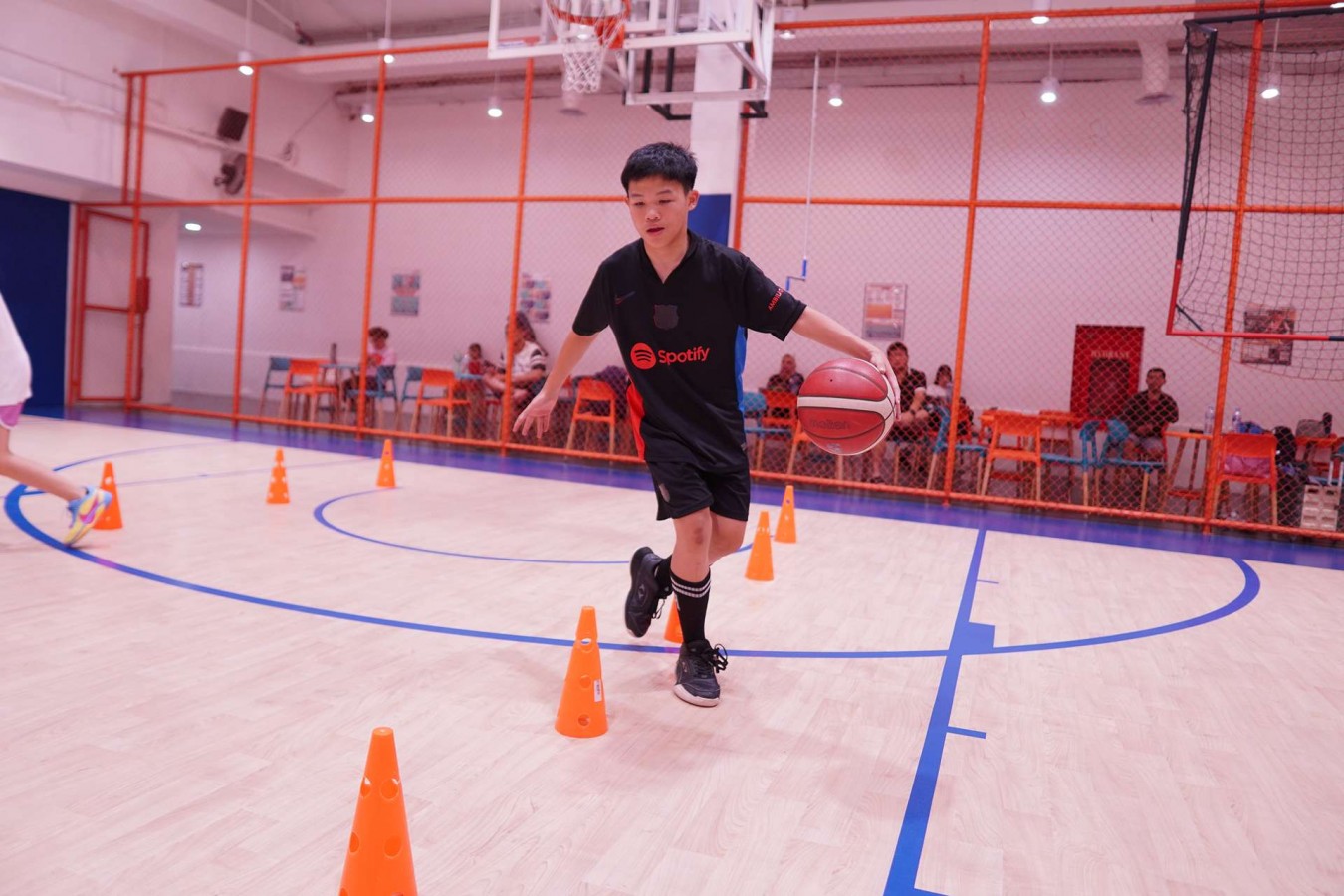What Is Men's Gymnastics? History, Apparatus, and Scoring Explained

Ever wondered how gymnasts manage to defy gravity while looking so graceful and powerful at the same time? Welcome to the world of men’s gymnastics which is a sport that blends strength, agility, and artistry into a breathtaking spectacle.
Let’s dive in and uncover the exciting world of men’s gymnastics, its fascinating history, apparatus, and how scoring works.
What Is Men’s Gymnastics?
Men’s gymnastics is a sport where male athletes perform routines that showcase their strength, flexibility, balance, and coordination. It’s not just about impressive flips and spins but also maximizing technical skills with artistry.
Men’s gymnastics is divided into six apparatus: floor exercise, pommel horse, still rings, vault, parallel bars, and horizontal bar. Each requires specific skills and highlights different aspects of an athlete's physical abilities.
This sport is part of the Olympics and various national and international competitions, making it a global sensation that captivates millions.
The History of Men’s Gymnastics
The roots of gymnastics can be traced back to ancient Greece, where it was used as a way to train warriors for combat. The term "gymnastics" originates from the Greek word gymnos, meaning naked, as athletes in those times trained without clothing.
Fast forward to the 18th century, modern gymnastics started taking shape in Germany under Friedrich Ludwig Jahn, often called the "Father of Gymnastics." He invented the parallel bars, horizontal bar, and other apparatus that remain central to the sport today.
Men’s gymnastics became a competitive sport in the late 19th century. It was first included in the modern Olympic Games in 1896, featuring events like parallel bars, pommel horse, and vault. Over time, the sport evolved to include a more structured scoring system and standardized routines.
Understanding the Scoring System
Gymnastics scoring may seem intricate, but it becomes clearer when broken down into its main components:
1. Difficulty Score (D-Score)
The D-score measures the overall complexity of a gymnast’s routine. This includes the number of skills performed and how challenging they are. Unlike other scores, the D-score doesn’t have a fixed maximum limit, making it open-ended.
However, at the elite level (like Olympics), D-scores typically range between 5.0 and 7.0, depending on the routine's intricacy.
2. Execution Score (E-Score)
The E-score, which starts at a perfect 10.0, focuses on how cleanly and precisely a gymnast performs their routine. Judges deduct points for any mistakes, such as bent knees, lack of pointed toes, or missteps during landings. The more polished and flawless the performance, the closer the E-score remains to 10.
3. Final Score
To calculate a gymnast's final score, the D-score and E-score are added together. For instance, if a gymnast earns a D-score of 5.5 and an E-score of 8.7, their final score will be 14.2.
4. Penalties
Additional deductions can be applied in specific situations. Common penalties include stepping outside the marked boundary during the floor exercise or exceeding the time limit for a routine. These penalties are subtracted from the total score, reducing the gymnast’s overall result.
Exploring the Men’s Gymnastics Apparatus
Men’s gymnastics is divided into six unique events, each with its own specialized apparatus. Each event highlights specific skills, making men’s gymnastics an incredible display of strength, agility, and precision.
Let’s dive into each apparatus to understand what makes them distinct and exciting!
1. Floor Exercise
The floor exercise takes place on a 12x12-meter spring floor. This mat is designed to provide bounce, helping gymnasts perform tumbling passes, flips, twists, and dynamic jumps.
This event showcases a gymnast’s strength, flexibility, and balance. Tumbling sequences require explosive power, while moments of stillness, like handstands, demand impeccable control. Precision in transitions between elements ensures a seamless floor routine.
2. Pommel Horse
The pommel horse is a padded, rectangular apparatus with two handles (pommels) on top. Gymnasts perform continuous circular leg movements, including flares, scissors, and complex hand placements.
This event emphasizes coordination, rhythm, and upper-body strength. Gymnasts must maintain a steady tempo while keeping their legs extended and toes pointed throughout the routine.
The pommel horse is one of the most technically demanding apparatuses. Every motion must flow seamlessly, requiring immense focus and precision. A single misstep can disrupt the rhythm.
3. Still Rings
The still rings consist of two circular handles suspended from straps. Gymnasts perform a mix of strength holds, controlled swings, and dramatic dismounts.
The rings demand incredible upper-body strength, control, and balance. Skills like the “Iron Cross” or “Planche” showcase a gymnast’s ability to hold their body in seemingly impossible positions.
Unlike other apparatuses, the rings don’t offer stability. Gymnasts must counteract the natural swing of the rings, making every move a true test of strength and stability.
4. Vault
For the vault, gymnasts sprint down a runway, launch off a springboard, and propel themselves over a vault table while performing aerial flips and twists.
The vault demonstrates power, speed, and precision. From the explosive run to the controlled landing, every second counts in this high-energy event.
The vault is thrilling to watch due to its fast-paced nature and jaw-dropping flips. A perfectly stuck landing often brings the crowd to its feet.
5. Parallel Bars
The parallel bars consist of two horizontal bars, approximately shoulder-width apart, set at a height that suits the gymnast. Athletes perform swings, holds, and flight elements between and above the bars.
This apparatus focuses on arm strength, coordination, and control. Moves like handstands on the bars require balance and stability, while transitions demand agility.
The parallel bars allow for a wide range of movements, combining strength elements with fluid swings and flight transitions, creating a visually stunning routine.
6. Horizontal Bar (High Bar)
The horizontal bar is a single steel bar suspended high off the ground. Gymnasts perform giant swings, release moves, and gravity-defying dismounts.
The high bar tests a gymnast’s grip strength, timing, and aerial awareness. Release moves require athletes to let go of the bar, perform rotations mid-air, and re-grasp the bar with precision.
Ready to Dive into the World of Men's Gymnastics?
If your kids are showing interest in gymnastics, why not give them the chance to explore their passion? At Rockstar Academy, the leading Sports & Performing Arts Academy, your children can thrive in an environment designed to help them succeed.
Rockstar Academy’s gymnastics program offers a comprehensive curriculum that includes exciting opportunities like Gymnastics Testing and the Gymnastics Elite Championships.
These events help young gymnasts track their progress, push their limits, and even prepare for national and international competitions. The championships encourage students to strive for excellence, develop discipline, and embrace good sportsmanship—all while having fun.
For those looking for a more personalized approach, we also offer Private Instruction, where students receive intensive one-on-one coaching tailored to their specific needs. With direct feedback and guidance from experienced instructors, students will get progress reports, training videos, and weekly exercises to practice at home to ensure continuous improvement.
For those who dream big, Rockstar Academy’s Dream Team is the ultimate program. This elite Competitive Sports Program combines 180 minutes of high-intensity training with expert coaching to help student-athletes unlock their full potential in sports and life. And the best part? It’s open to both boys and girls who are ready to challenge themselves and shine.
Still unsure? Rockstar Academy offers a free trial class to let your kids experience the excitement firsthand. Don’t miss out on the chance to help your child grow, learn, and achieve greatness. Contact Rockstar Academy today!
FAQ
What age can boys start gymnastics?
Boys can start gymnastics as early as 3-5 years old in beginner classes. Early training helps develop coordination, flexibility, and strength.
How is men’s gymnastics different from women’s gymnastics?
Men’s gymnastics has six apparatus, focusing more on upper-body strength and power. Women’s gymnastics has four apparatus, emphasizing grace and artistry.
What’s the most challenging apparatus in men’s gymnastics?
This varies by gymnast, but the pommel horse is often considered the most technically challenging due to its complex movements and requirement for constant control.



